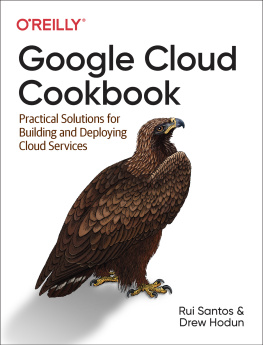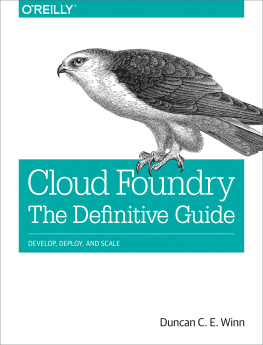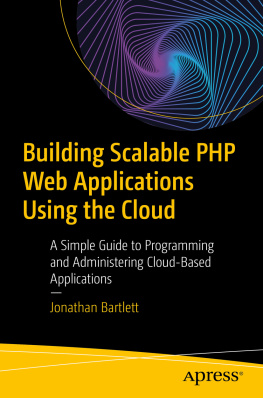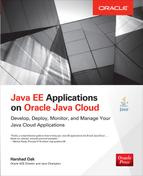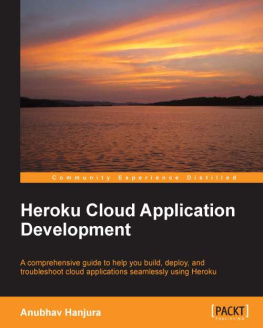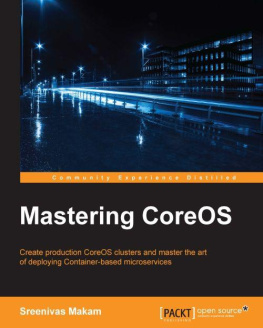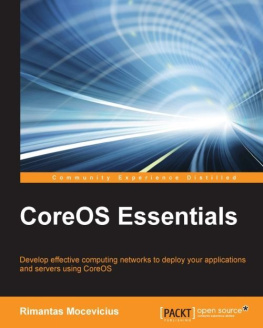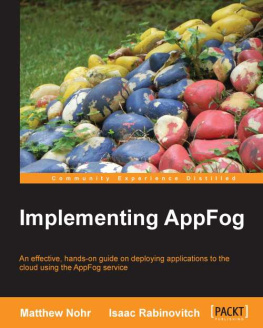Smiler S.K. - Learning CoreOS
Here you can read online Smiler S.K. - Learning CoreOS full text of the book (entire story) in english for free. Download pdf and epub, get meaning, cover and reviews about this ebook. genre: Computer. Description of the work, (preface) as well as reviews are available. Best literature library LitArk.com created for fans of good reading and offers a wide selection of genres:
Romance novel
Science fiction
Adventure
Detective
Science
History
Home and family
Prose
Art
Politics
Computer
Non-fiction
Religion
Business
Children
Humor
Choose a favorite category and find really read worthwhile books. Enjoy immersion in the world of imagination, feel the emotions of the characters or learn something new for yourself, make an fascinating discovery.

Learning CoreOS: summary, description and annotation
We offer to read an annotation, description, summary or preface (depends on what the author of the book "Learning CoreOS" wrote himself). If you haven't found the necessary information about the book — write in the comments, we will try to find it.
Your one-stop guide for building, configuring, maintaining, and deploying one of the worlds fastest growing OSes
About This Book
Understand the features of CoreOS and learn to administrate and secure a CoreOS environment
Develop, test, and deploy cloud services and applications more quickly and efficiently inside lightweight containers using CoreOS
This is a complete tutorial on CoreOS, which is the preferred OS for cloud computing as it contains components that facilitate cloud management
What You Will Learn
Understand the benefits of CoreOS as a cloud orchestration platform
Learn about lightweight containers and various container frameworks such as Docker and RKT in CoreOS
Manage services and containers across cluster using Fleet and systemd
Set up a CoreOS environment using Vagrant
Create and manage CoreOS clusters
Discover the service parameters using etcd
Find out about chaining services running on the cluster using Flannel / Rudder and Weave
Create a virtual tenant network and service chaining using OVS
In Detail
CoreOS is an open source operating system developed upon the Linux kernel. The rise of CoreOS is directly related to the rise of Docker (a Linux container management system). It is a minimal operating system layer and takes a different approach to automating the deployment of containers. The major difference between CoreOS and other Linux distributions is that CoreOS was designed to deploy hundreds of servers. CoreOS immensely helps the users to create systems, which are easy to scale and manage, making life easier for all, be it developer, QA, or deployer.
This book is all about setting up, deploying, and using CoreOS to manage clusters and clouds. It will help you understand what CoreOS is and its benefits as a cloud orchestration platform. First, well show you how to set up a simple CoreOS instance with single node in the cluster and how to run a Docker container inside the CoreOS instance. Next, youll be introduced to Fleet and systemd, and will deploy and distribute Docker services across different nodes in cluster using Fleet.
Later, youll be briefed about running services in a cluster with constraints, publishing the services already running on the cluster to new services, and making your services interact with each other. We conclude by teaching you about advanced container networking. By the end of the book, you will know the salient features of CoreOS and will be able to deploy, administrate, and secure a CoreOS environment.
Style and approach
This practical guide covers the basics and advanced topics related to CoreOS and lightweight containers. The topics are covered in an easy-to-follow manner with each feature explained in detail, beginning with a brief overview and followed by an explanation of its corresponding configuration files
Smiler S.K.: author's other books
Who wrote Learning CoreOS? Find out the surname, the name of the author of the book and a list of all author's works by series.

